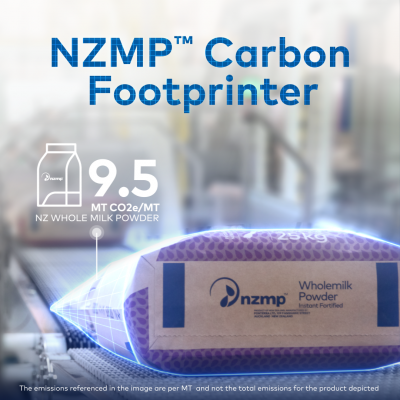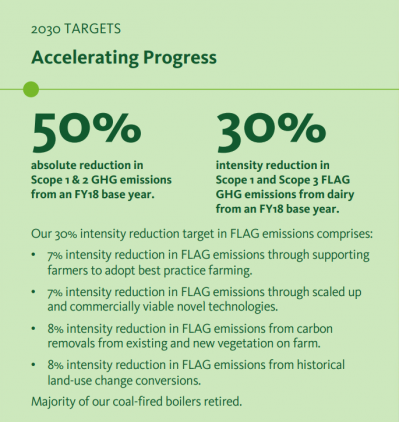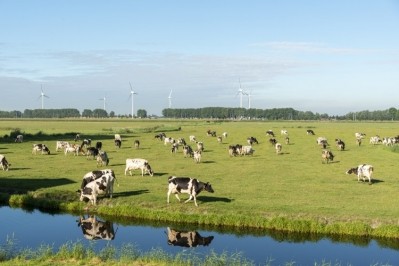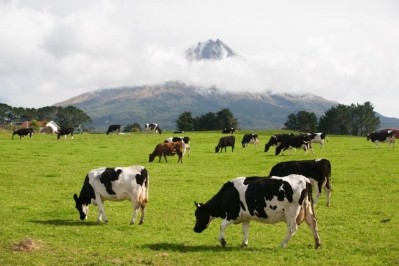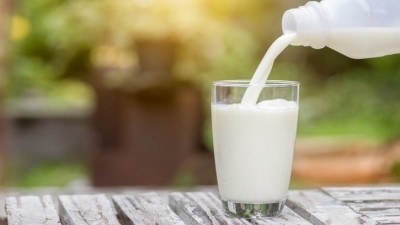Fonterra directors on NZMP Carbon Footprinter: ‘We want to be transparent with our emissions data’
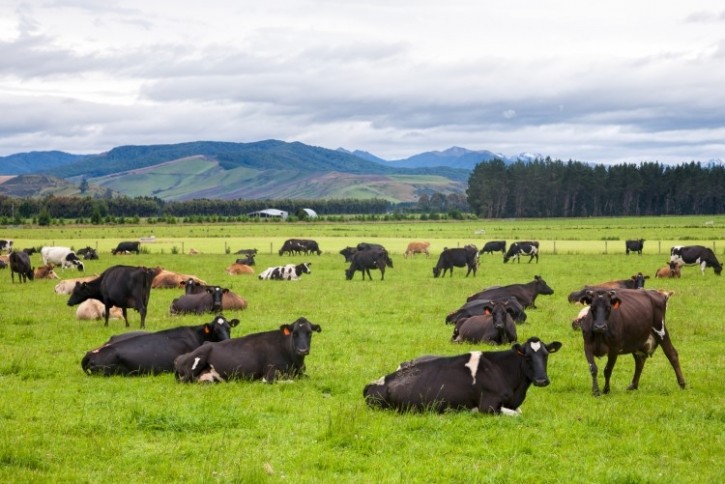
The move underpins Fonterra’s desire to improve the level of transparency when it comes to its climate impact whilst allowing customers to plan ahead.
The digital tool, called the NZMP Carbon Footprinter, displays the amount of carbon emissions associated with a particular ingredient. This is based on emissions data collected from across Fonterra’s dairy supply chain and manufacturing operations, and is calculated on a metric-ton per carbon dioxide equivalence basis.
For example, 200 MT of whole milk powder is associated with 1,900 MT CO2e. The tool is also freely available in a limited scope, allowing anyone to measure the emissions profile of up to 3 ingredients at once straight from the NZMP website. This public availability aspect of the tool is unique in the entire dairy industry, according to Fonterra.
Existing NZMP customers can also request an estimate of what the emissions profile for those same products could look like in 2030, assuming Fonterra achieves its 2030 climate targets.
Charlotte Rutherford, director of sustainability at the co-op, told us that while Fonterra had been publicly disclosing its emissions profile since 2017, measuring its progress started much earlier. “More than 20 years ago, we set our first decarbonization target and we’ve been measuring our on-farm carbon footprint for over 15 years,” she explained.
As far as the NZMP Carbon Footprinter is concerned, “data comes from the farm dairy records for each of our New Zealand dairy farms and data sources across our New Zealand manufacturing operations and supply chain,” Rutherford explained. “We use our most recent available data, which for right now comes from our August 2021 to July 2022 on-farm data and the August 2022 to July 2023 manufacturing data.”
The tool is intended for ingredients customers and includes the majority of Fonterra’s New Zealand-sourced dairy ingredients, but as mentioned above, anyone can access it in a limited scope. The tool doesn’t include secondary products made from core dairy ingredients – such as processed cheese, products with higher levels of non-dairy ingredients, and most smaller-format consumer products. “This is because we haven’t had a huge interest from our customers for these types of products,” Rutherford clarified.
So what is the demand for this type of service? According to Fonterra’s Gillian Munnik, global sales & marketing director for global markets, customers ‘quite rightly’ want to understand the impact of sourced products on their own climate ambitions. “Interest in our product emissions data has been steadily growing, with demand significantly increasing over the last 12-18 months as more of our customers set climate targets,” she said.
“We know that for many of our customers, we’re a large part of their scope 3 emissions. They quite rightly need to understand the emissions profile of the dairy products they purchase from us and the plans and actions we have in place to reduce our emissions, therefore what impact this may have on their own targets.”
Munnik added that for many years, reporting emissions at a milk-source level had met customer needs, but customers now increasingly need to know how these emissions translate to products they purchase. “After all, they’re buying cheese to put on a pizza, or milk powder to use in confectionery. It’s reasonable that we provide our data back to them in a format that’s meaningful to them.”
She suggested that providing data in this format works well for its customers’ plans and reporting requirements, since the legal and regulatory landscape for setting sustainability targets, reporting on emissions and introducing new label claims differs greatly market by market and is constantly evolving.
“The data from the NZMP Carbon Footprinter could be part of an approach for brands to build trust and transparency with their consumers - for example, determining the carbon footprint of their consumer products,” Munnik explained. “But again, we recognize the complex legal and regulatory environment, and that the full lifecycle analysis of the end product needs to be accounted for, and that customers will also need to ensure that emissions reporting across their different inputs is consistent and aligned with equivalent standards.”
Fonterra also offers carbon footprint certificates for its New Zealand-sourced dairy ingredients. These are ‘carbonreduce’ certificates issued by third-party auditor Toitu Envirocare and awarded following independent verification of the measurement, management and mitigation steps involved in the reduction plans; the audit is carried out in accordance with international standards like ISO 14064-1, ISO 14067 or PAS 2050. According to Toitu’s website, organisations that achieve a carbonreduce, net carbonzero or climate positive certification will be able to claim they have science-based evidence that they are ‘climate leaders on the road to net zero, and are aligned with local and global lead practice for their achievements and commitments’.
The carbonreduce certification for Fonterra’s ingredients is of limited assurance. Asked if this aspect of the certification is clear enough to customers, Munnik responded: "'Carbonreduce-certified’ is a Toitu Envirocare certification that confirms we have measured our footprint from cradle to gate (New Zealand port), and that we have an ongoing GHG reduction plan in place. It uses our Aug 2021- July 2022 on-farm data and the Aug 2022 - July 2023 manufacturing data and does not include offsets or removals.
“We anticipate that the carbonreduce-certified certification will include carbon removals in the future as we’re able to provide the appropriate level of assurance on the additionality and permanence of these removals as well as evidence of Fonterra’s right to claim this removal.”
Meanwhile, whether the forecasted estimates will materialize would depend on Fonterra meeting its climate targets. The co-op, which published its Climate Roadmap last year, had been criticized by Greenpeace Aotearoa for relying too much on new or emerging technology and carbon offsets to realize its plans. DairyReporter wrote that the co-op is reporting its on-farm emissions in intensity terms, a measure by which other businesses including Cargill and Olam also report, but which is less ambitious compared to absolute targets.
For example, Fonterra is working on scaling up ‘commercially viable novel technologies’ to tackle its FLAG emissions (Forest, Land and Agriculture, based on SBTi’s science-based target-setting guidance) and is engaging with farmers to come up with an environmental plan for each farm by 2025.
Asked what makes her confident that the Carbon Footprinter would be a reliable tool for measuring the products’ future carbon impact given all the variables at play, the co-op’s director of sustainability Charlotte Rutherford highlighted that this functionality is ‘intended to provide customers an idea of what the emissions footprint for a product could be’.
“We’re confident that our Climate Roadmap sets a solid pathway to guide us towards achievement of these targets,” she added. “Publishing the Roadmap was a significant step on our sustainability journey and indicates our commitment towards achieving emissions reductions across our value chain.
“That’s not to say that there isn’t work to be done and we know that achieving these targets will take collective action across our business. There will be no one solution here, and in particular for our on-farm target, this will require a combination of sharing best farming practices and the development of novel technology.”
Asked what progress is being made on some of the technical solutions that the co-op has elected to tackle enteric methane emissions with, Rutherford said: “Fonterra is actively involved in developing Kowbucha, which uses probiotics to reduce methane in cows. Early calf trials have been promising and trials are ongoing to test the safety and efficacy of the innovation.
“[We are] working with Sea Forest to trial the use of Asparagopsis red seaweed to reduce methane [and Fonterra is] a founding partner in a world-first public-private partnership, AgriZeroNZ, which is investing in a wide range of innovation and research, including a methane-reducing bolus under development by Ruminant BioTech; methane vaccines, and probiotic and enzyme-based innovations from Hoofprint Biome.”
Asked about the co-op’s 2024 objectives in terms of improving its climate impact, the director of sustainability added: “Our Climate Roadmap talks to our plan to reduce emissions, which includes sustainability improvements right across our value chain. At our manufacturing sites, we’re continuing our decarbonization efforts. For example, in 2024 work is underway to replace a coal boiler at our Edendale plant with a new electrode boiler which will run on renewably sourced electricity. Over the past five years, we’ve completed decarbonization projects at five of our manufacturing sites.
“We’re continuing to work with farmers to achieve our on-farm emissions targets. This includes 100% of farms having a comprehensive Farm Environment Plan by 2025 (we are currently sitting at 85% of supplying farms); providing annual Farm Insights Reports that highlight opportunities to focus on efficiency, and we are working with farmers one-on-one to support on-farm change.”
The Carbon Footprinter tool is available now from NZMP's website.
